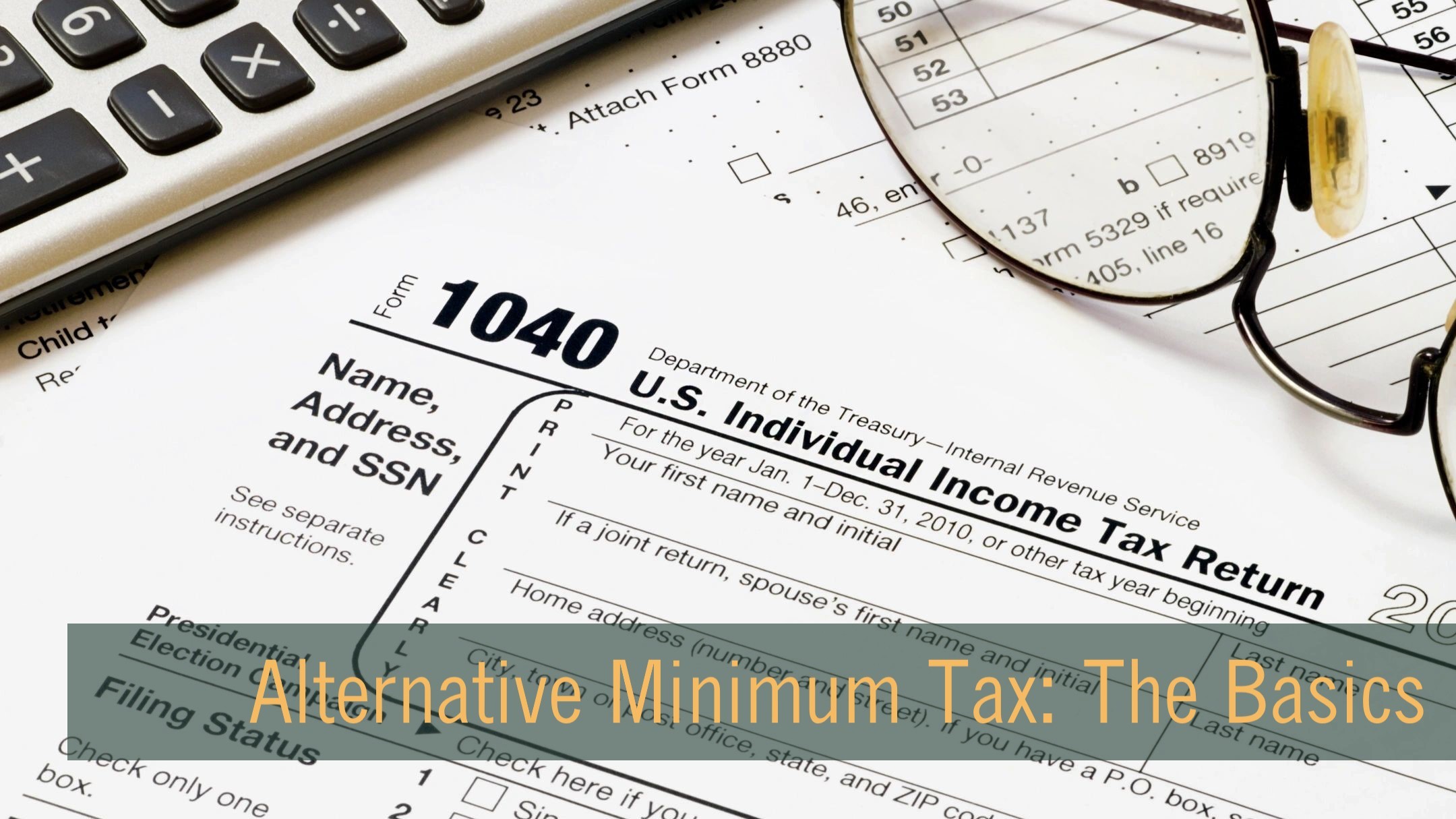When it comes to federal income tax, there are few subjects capable of causing as much confusion as the Alternative Minimum Tax. The Tax Cuts and Jobs Act substantially increased the Alternative Minimum Tax exemptions and exemption phaseout thresholds for 2018 to 2025. Here’s a quick guide to understanding the Alternative Minimum Tax (AMT).
What is Alternative Minimum Tax (AMT)?
The AMT is essentially a separate federal income tax system with its own tax rates, and its own set of rules governing the recognition and timing of income and expenses. If you’re subject to the AMT, you have to calculate your taxes twice — once under the regular tax system and again under the AMT system. If your income tax liability under the AMT is greater than your liability under the regular tax system, the difference is reported as an additional tax on your federal income tax return. However, if you’re subject to the AMT in one year, you may be entitled to a credit that can be applied against regular tax liability in future years.
How do you know if you’re subject to the AMT?
Part of the problem with the AMT is that, without doing some calculations, there’s no easy way to determine whether or not you’re subject to the tax. Key AMT “triggers” have included the number of personal exemptions you claim (no longer applicable from 2018 to 2025), your miscellaneous itemized deductions (no longer applicable from 2018 to 2025), and your state and local tax deductions. So, for example, if you have a large family and live in a high-tax state, there’s a good possibility you might have to contend with the AMT. IRS Form 1040 instructions include a worksheet that may help you determine whether you’re subject to the AMT (an electronic version of this worksheet is also available on the IRS website), but you might need to complete IRS Form 6251 to know for sure.
Common AMT adjustments
It’s no easy task to calculate the AMT, in part because of the number and seemingly disparate nature of the adjustments that need to be made. Here are some of the more common AMT adjustments:
- Standard deduction and personal exemptions: The federal standard deduction, generally available under the regular tax system if you don’t itemize deductions, is not allowed for purposes of calculating the AMT. Nor could you take a deduction for personal exemptions for purposes of calculating the AMT when personal exemptions were still available under the regular tax system in 2017.
- Itemized deductions: Under the AMT calculation, no deduction is allowed for state and local taxes paid, or for certain miscellaneous itemized deductions. In 2018 to 2025, those miscellaneous itemized deductions are not allowed under the regular tax system as well. You can only deduct qualifying residence interest (e.g., mortgage or home equity loan interest) to the extent the loan proceeds are used to purchase, construct, or improve a principal residence. In 2018 to 2025, this is also the rule under the regular tax system.
- Exercise of incentive stock options (ISOs): Under the regular tax system, tax is generally deferred until you sell the acquired stock. But for AMT purposes, when you exercise an ISO, income is generally recognized to the extent that the fair market value of the acquired shares exceeds the option price. This means that a significant ISO exercise in a year can trigger AMT liability. If ISOs are exercised and sold in the same year, however, no AMT adjustment is needed, since any income would be recognized for regular tax purposes as well.
- Depreciation: If you’re depreciating assets (for example, if you’re a sole proprietor and own an asset for business use), you’ll have to calculate depreciation twice — once under regular income tax rules and once under AMT rules.
AMT exemption amounts
While the AMT takes away personal exemptions (no longer applicable from 2018 to 2025) and a number of deductions, it provides specific AMT exemptions. The amount of AMT exemption that you’re entitled to depends on your filing status.
However, your exemption amount begins to phase out once your taxable income exceeds a certain threshold. (Specifically, your exemption amount is reduced by $0.25 for every $1.00 you have in taxable income over the threshold amount).
AMT Exemption Amounts by Filing Status
| 2019 | 2020 | |
| Married filing jointly | $111,700 | $113,400 |
| Single or head of household | $71,700 | $72,900 |
| Married filing separately | $55,850 | $56,700 |
AMT Exemption Phaseout Threshold
| 2019 | 2020 | |
| Married filing jointly | $1,020,600 | $1,036,800 |
| Single or head of household | $510,300 | $518,400 |
| Married filing separately | $510,300 | $518,400 |
In the context of AMT exemption amounts and tax rates, taxable income really refers to your alternative minimum taxable income (AMTI). Your AMTI is your regular taxable income increased or decreased by AMT preferences and adjustments.
When it comes to the phaseout of AMT exemption amounts, a special calculation applies to individuals who are married filing a separate federal income tax return. These individuals have to add an additional amount to their AMTI before calculating the exemption phaseout.
AMT rates
Under the AMT, the first $197,900 (for 2020, $194,800 for 2019) of your taxable income is taxed at a rate of 26%. If your filing status is married filing separately, the 26% rate applies to your first $98,950 (for 2020, $97,400 for 2019) in taxable income. Taxable income above this amount is taxed at a flat rate of 28%.
The lower maximum tax rates that generally apply to long-term capital gain and qualifying dividends apply to the AMT calculation as well. So, even under AMT rules, a maximum rate of 20%, 15%, or 0% (depending on your taxable income) generally applies for 2019 and 2020. However, long-term capital gain and qualifying dividends are included when you determine your taxable income under the AMT system. That means large capital gains and qualifying dividends can push you into the phaseout range for AMT exemptions, and can indirectly increase AMT exposure.
Summing up
Owing AMT isn’t the end of the world, but it can be a very unpleasant surprise. It also turns a number of traditional tax planning strategies (e.g., accelerating deductions) on their heads. It’s a good idea to factor in the AMT before the end of the year, while there’s still time to plan.
If you think you might be subject to the Alternative Minimum Tax, it may be worth sitting down to discuss your situation with a tax professional.
Copyright 2006-2019 Broadridge Investor Communication Solutions, Inc. All rights reserved. The information provided is from a third-party source which we believe to be reliable, but we have not independently verified the content. This material is intended for informational purposes only and should not be construed as legal or tax advice and is not intended to replace the advice of a qualified attorney, tax advisor or plan provider.

